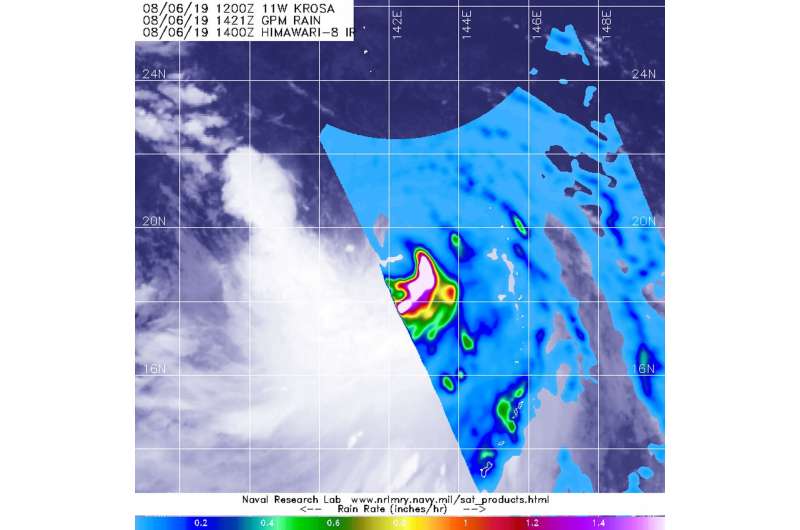The GPM core satellite passed over Tropical Storm Krosa at 10:21 a.m. EDT (1421 UTC) on August 6, 2019. GPM found the heaviest rainfall (pink) was east of the center of circulation falling at a rate of 50 mm (about 2 inches) per hour. Credit: NASA/JAXA/NRL
Tropical Storm Krosa had recently developed into a tropical storm when the GPM satellite passed overhead and found heavy rainfall. Fortunately, the storm was over open waters.
Krosa formed on August 5 as the eleventh tropical depression of the Northwestern Pacific Ocean typhoon season. On August 6 by 5 a.m. EDT (0900 UTC) it had become a tropical storm and was re-named Krosa.
The Global Precipitation Measurement mission or GPM core satellite passed over Tropical Storm Krosa at 10:21 a.m. EDT (1421 UTC) on August 6, 2019. GPM found the heaviest rainfall was east of the center of circulation falling at a rate of 50 mm (about 2 inches) per hour, over open ocean GPM is a joint mission between NASA and the Japan Aerospace Exploration Agency, JAXA.
At 11 a.m. EDT (1500 UTC) Tropical storm Krosa was located near19.0 degrees north latitude and 142.3 east longitude, about 352 miles south of Iwo To Island, Japan. Krosa was moving to the northwest and had maximum sustained winds near 40 knots (46 mph/74 kph).
The Joint Typhoon Warning Center noted that Krosa will move northwest, then later north and strengthen to a typhoon with maximum sustained winds near 75 knots (86 mph/139 kph).
Krosa is expected to pass very near the island of Iwo To on August 9 and move north.
Provided by NASA's Goddard Space Flight Center
























